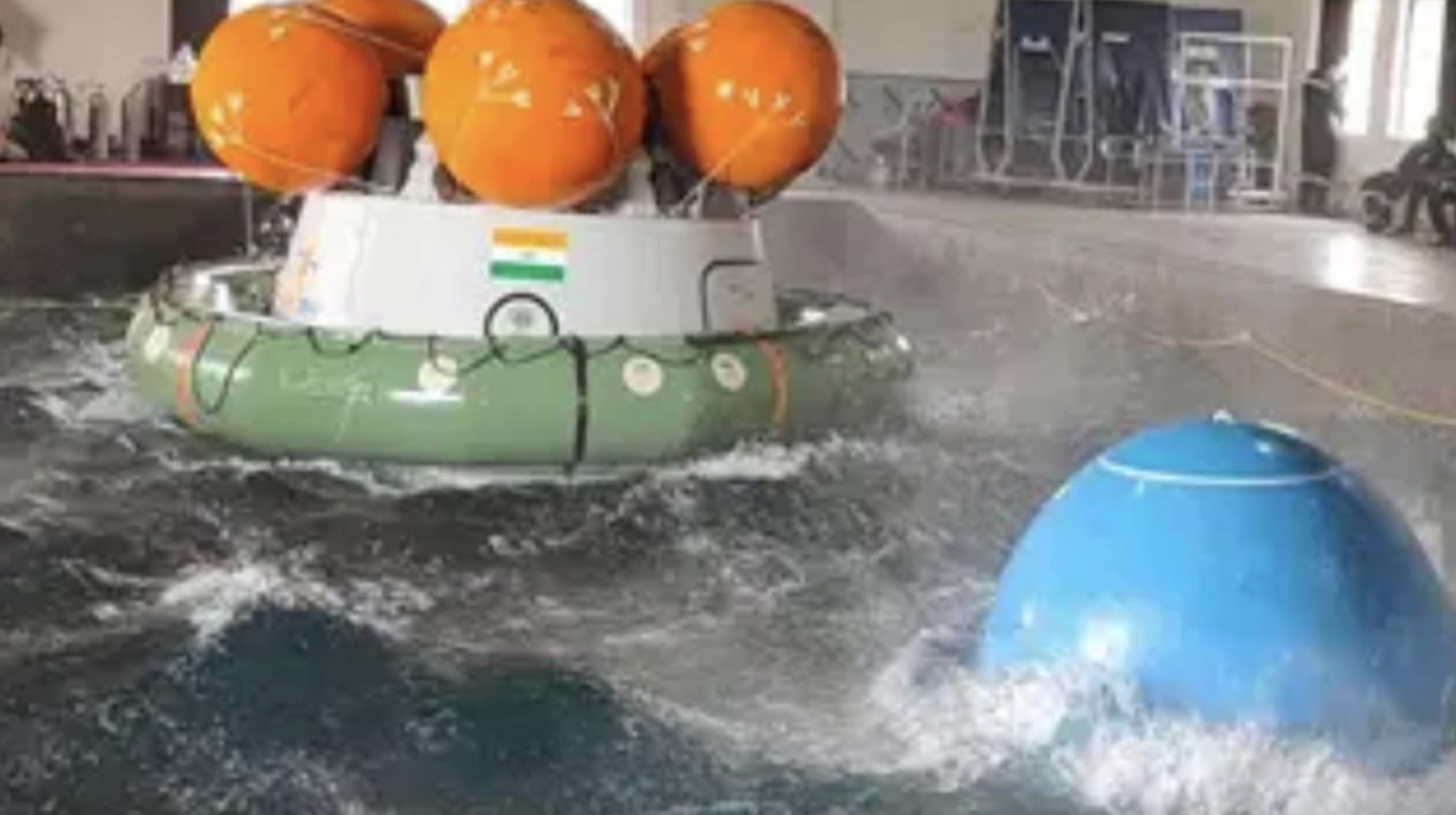India tests recovery of spacecraft for Gaganyaan astronaut mission (photos)
Recovery procedures are yet to be finalized, ISRO said.

After a string of delays, India's most ambitious mission is slowly finding its footing again.
On Tuesday (Feb. 7), the Indian Space Research Organisation (ISRO), India's national space agency, resumed a series of tests needed to perfect procedures and hardware for its Gaganyaan human spaceflight program. The agency collaborated with the Indian Navy to recover a mock crew module from a closed pool, it said Wednesday (Feb. 8) in a press release.
The tests are being carried out at the Water Survival Test Facility, a location owned by the Indian Navy in Kochi (previously called Cochin), which is a city in southwest India. The state-of-the-art facility "simulates different sea state conditions, environmental conditions and day/night conditions," according to ISRO
Related: ISRO: The Indian Space Research Organisation

ISRO has long been testing the hardware that will fly astronauts on Gaganyaan missions. The agency validated the program's launch vehicle in 2014 and its launch abort and crew escape systems in 2018, before the coronavirus pandemic halted astronaut training, adding to the program's setbacks. ISRO slowly bounced back in 2021 with tests of engines, solid rocket boosters and parachutes.
In the latest tests in a controlled environment at Kochi, scientists have begun nailing down operations to recover the Gaganyaan module and its crew after they splash down in the ocean at mission's end. For now, scientists are using a mockup called the Crew Module Recovery Model (CMRM), which simulates details of the real one upon touchdown on water, including its mass, dimensions and center of gravity, the agency said.
Kochi, part of the coastal state of Kerala, touches the Bay of Bengal and offers an open sea where the agency will likely test its crew modules in the coming months.
Breaking space news, the latest updates on rocket launches, skywatching events and more!
ISRO said these tests also train the recovery teams and flight crew, who will work in coordination during reentry and landing to wrap up the week-long Gaganyaan orbital mission. Similarly, NASA's team practiced nine such tests using a mockup of its Orion capsule before being certified to recover the real spacecraft from the Pacific Ocean after the uncrewed Artemis 1 mission landed last December.
For India, Gaganyaan is the first mission of the Indian Human Spaceflight Programme, which was initiated back in 2007 with a goal to develop homegrown technology worthy of crewed missions. If successful, the mission would mark India's first crewed mission to space, and place the country fourth after the U.S., Russia and China to accomplish such a feat.
That accomplishment, however, is steadily being delayed one year at a time. ISRO had previously been targeting a crewed mission in December 2021, which it then pushed to August 2022 to mark India's 75 years of independence. However, in June 2022, the agency's chairman Shri. Somanath postponed the mission once again, citing safety concerns. The most current statement places the crewed launch in late 2024.
Before sending humans to space, ISRO will conduct two uncrewed flights to low Earth orbit using Gaganyaan gear, and at least one of those will carry a humanoid robot as payload, the agency has said in the past. These flights, meant to validate the mission's technology and launch vehicle, are now scheduled to occur in late 2023 and the first half of 2024.
ISRO continues to remain tight-lipped about the coming astronaut mission, so details even in the few official press releases and local media reports are sparse.
In its latest announcement, the space agency said the operating procedures for recovery efforts are yet to be finalized. It attributed the need for a high number of tests to the safe recovery of the crew, which is "the final step to be accomplished for any successful human spaceflight."
The recovery efforts for Gaganyaan's crew and crew module will be led by the Indian Navy with contributions from several other government organizations involved with the mission, the agency said.
Soon, ISRO plans to provide flight training to its crew at the same test facility in Kochi, which has the infrastructure for "realistic training" to hone them on escape procedures under different simulated scenarios, including crashes, the agency said.
Follow us on Twitter @Spacedotcom or on Facebook.

Sharmila Kuthunur is an independent space journalist based in Bengaluru, India. Her work has also appeared in Scientific American, Science, Astronomy and Live Science, among other publications. She holds a master's degree in journalism from Northeastern University in Boston.
